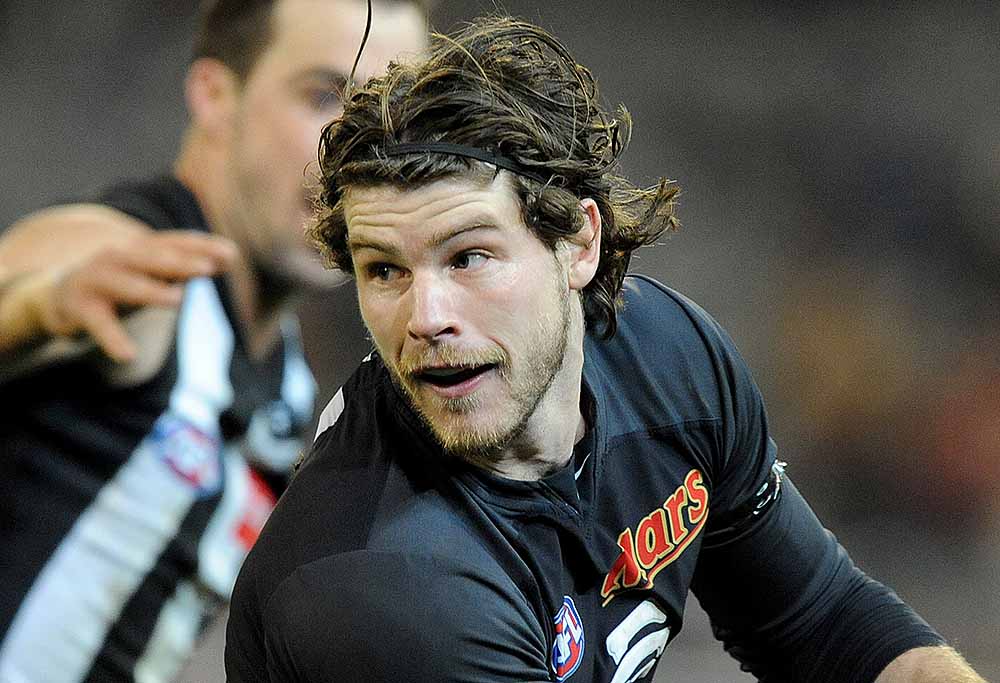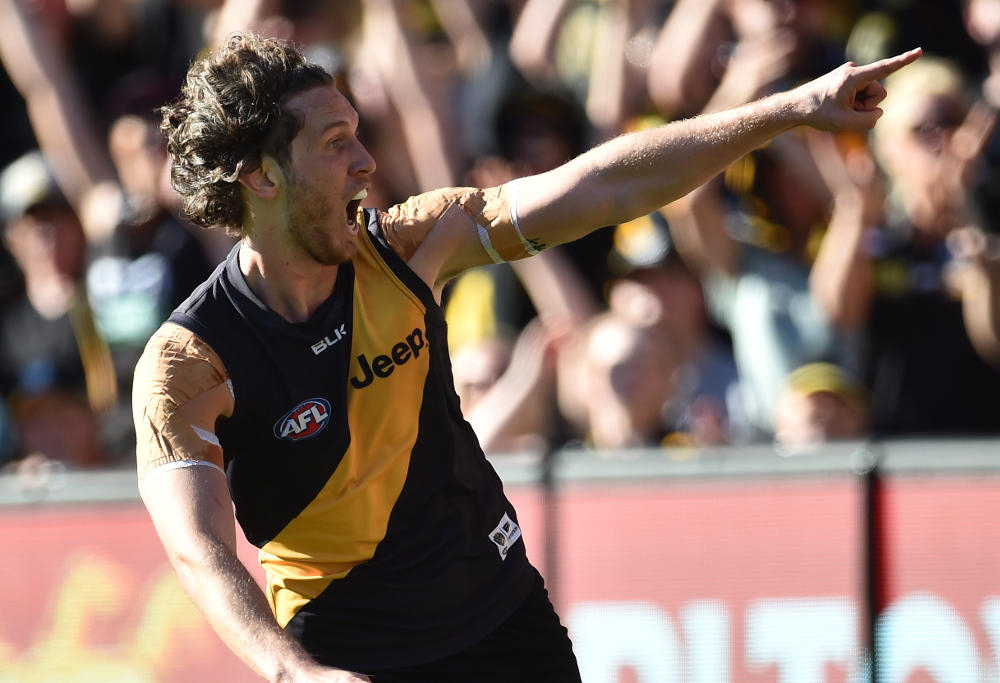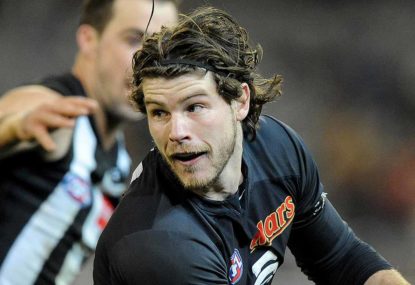The dust has settled on a busy, if not frenzied, AFL trade period. 43 deals were done in all, and the winners and losers have been crowned. Here’s some things we learnt in the past fortnight.
Contracts still matter
It’s become the fashion-forward statement of the AFL trade period: contracts aren’t worth the paper they’re written on. Collingwood captain Scott Pendlebury somewhat broke ranks with the playing group in declaring that contracts don’t mean anything anymore.
“Really, anyone can get out of it whenever they want,” Pendlebury said.
“I think even last year, a few players got out of deals that were long term.
“Port Adelaide were trying to get (Hamish) Hartlett to leave and he’d just signed a five-year deal.”
Pendlebury wasn’t necessarily passing judgement on matters, merely observing that an increasing number of players who have made long-term commitments to their current clubs were looking to move on to what they believe are greener pastures.
Fremantle’s Cam McCarthy (then of the Giants) was the avatar for this last year, requesting a trade to the Dockers after signing on long term with GWS a few months prior. His reasons were legitimate, even if they came across as convenient in their timing. The Giants didn’t do the deal, and McCarthy spent the year training with a WAFL team before being shipped to the Dockers in this trade period.
This year, some more senior players tried their luck: Richmond’s Brett Deledio, Geelong’s Josh Caddy, Brisbane’s Pearce Hanley and Collingwood’s Travis Cloke all had deals which expired in 2017 or later. All requested trades to new clubs. All managed to convince their current/former clubs to deal.
The other was Carlton’s Bryce Gibbs, whom Adelaide announced would like to join them on the first day of the trade period. Rumours had been circling for a while that the Crows were set to make a play for a big name midfielder – Gibbs had been mentioned but the prospect of an actual trade always looked remote.
\
He remains a Blue, contracted until at least the end of the 2019 season. Why? Because Carlton held firm on their compensation demands for losing a player who they had under contract for another three seasons. Contracts, evidently, matter.
(That, plus the clandestine PR management of the early phase of Operation Gibbs on the part of Adelaide and Gibb’s management.)
There’s been plenty of back and forth about this non-trade already, including between the two clubs who have traded public statements in the days since the trade deadline. My view on the matter is already on the public record: Gibbs could be the difference between finals and a flag for the Crows, and they should have paid whatever price within reason the Blues were willing to sell him for.
The price, it emerged in the hours after the trade deadline, was two first round picks; Adelaide’s first selections in the 2016 and 2017 drafts. There are some vague references to “a quality player” in some statements, too.
If I’m Adelaide, I do that deal for two first round picks. If I’m Adelaide, I do that deal for a 2016 first round pick, a 2017 second round pick and a player. If I’m Adelaide I do that deal for a 2016 first round pick and a best 22 player plucked from my luxurious forward line.
Yes, it is more than he would be worth on a hypothetically open market, but when you are a player away from completion, you pay that price. Alas, the Crows missed out on their man, and they will enter the 2017 season a player short through the middle as they were this season.
If Gibbs had have been off contract, either as an expiring player or a free agent, then this deal is one of the first to be done. The meta-story here is that contracts still matter. That the Blues could hold firm, and demand the Crows meet them three-quarters of the way rather than in the middle, confirms this.
Whether holding firm and shooting for the moon was the smart play in the context of their list management is open for debate. My views on this are, once again, well known.
It goes the other way, too, with a high profile example of a player using his contracted status to engineer an outcome.
Port Adelaide were desperate to deal their way meaningfully into the top end of the 2016 draft, after trading away first round picks in 2013, 2014 and 2015. They ended up with their haul of top 30 picks, dealing their way to picks 14, 17, 30 and 31 by selling pick nine and their 2017 future first rounder.
For a time, it looked as though their path to more picks cut straight through Hamish Hartlett, who had rejected free agency to sign on until 2021 less than 12 months prior. After some to-ing and fro-ing, Hartlett decided to stay a Power player, as he is well within his right to do so as a contracted player.
Player power has been a talking point this year, and rightly so. The players hold sway, due to collectively bargained provisions in their contracts which afford them influence in keeping with a by-gone era. Those powers should be watered down in the new Collective Bargaining Agreement. But for now, contracts do still mean something.
The ‘Ring Chaser’ era may be upon us
Brett Deledio had an interesting fortnight, culminating in him joining the peaking GWS Giants on a three-year deal. That was after a transaction with Geelong, another team with genuine claims on a premiership in the next year or two, couldn’t be arranged.
In effect, Deledio wanted to play for a bonafide contender in 2017, and in his mind, that wasn’t Richmond.
There’s nothing inherently wrong with this, of course. Deledio has given 12 years and 243 games of service to the Tigers and is most certainly more than 80 per cent of the way through his career. In his mind, we judge, the Tigers were not the team to deliver him a shot at a premiership.
Players have an increasing means to move to where they want to go; Deledio was a contracted player but was set to become an unrestricted free agent at the end of next season. The Tigers were faced with a dilemma which will only grow more common as free agency beds down and service limits are lowered: keep impending free agents for too long, and you risk losing them for nothing.
Deledio’s situation was unique this season. The Tigers managed to extract a 2017 first round pick (Geelong’s on traded pick) and 2017 third round pick from the Giants, for a player who has at the very most 80 games of football still in him. Deledio gets a chance to play in a flag immediately – which could have happened if he’d stayed at Richmond, but will most certainly happen now he’s at the Giants.
In the US, they call these sorts of deals and players partaking in these deals ‘ring chasers’. We should prepare to see more and more of them coming forward in the years ahead.

Cap space is now a genuine asset
Rhys Palmer, the 2008 Rising Star and inaugural GWS Giant, was traded to Carlton for pick 135 – an eighth round pick. Pick 135 has never been used in VFL or AFL draft history. Indeed, the lowest pick that has ever been used is 124, by the West Coast Eagles in 1992. The player taken, Brayden Lyle, ended up playing 116 games for the Eagles and Port Adelaide.
These days, a pick with such a large number is nigh-on useless. Most clubs don’t have the requisite list spots available to make it to the seventh round. Even rookies are upgraded to the senior list with picks well before the eighth round rolls up.
Quite clearly, Palmer’s on-field abilities are worth more than this, and particularly to Carlton who are in desperate need of proven forward half players. At 27 years of age, Palmer’s career has a reasonable way to run.
So what’s the deal? It is likely the Giants offloaded Palmer for effectively nothing as a result of salary cap pressures, both current and looming. HQ shifted the goal posts on the Giants at some point this year, ending their league entry concessions a year or two early and shaving half a million dollars off of their salary cap allowance in 2017. Giants list manager Wayne Campbell remarked after the trade period that the early removal of these concessions had forced GWS’ hand on a number of players. He didn’t name names, but logic dictates that swapping a useful player for a jar full of nose hairs fits the criteria of a forced deal.
It was a sign that in an increasingly sophisticated player market, salary cap space is rapidly becoming a genuine asset in its own right.
The other clear sign was the situation at Hawthorn. Plenty has been written about the Hawks’ move to trade veterans, Sam Mitchell and Jordan Lewis, ostensibly so they could bring in Jaeger O’Meara, Tom Mitchell and Ty Vickery in a re-tool play that ups their risk rating significantly heading into next year.

We talked about Hawthorn’s off season before it happened, noting the difficult balancing act the brass faced in bringing in such high-quality recruits into an already blue-chip-laden playing group. In the end, the cap wasn’t big enough for the old and the new, and as should be expected, the new won out.
But this is again an example of win-win arrangement. The Hawks bolt on three players that fit snugly into their middle age core, while Lewis and Mitchell both get outcomes important to them – job security and a locked in path to coaching, respectively. It so happens that the constraints of the salary cap helped facilitate both of these things.
Deals like this look perplexing at face value, in large part because player salaries are kept in a secure, de-identified database at HQ. Hell, we don’t even know what the clubs are spending on players as individual entities. The opacity of AFL finances hinders our ability to understand an increasingly complex and sophisticated market.
Perhaps it’s time for that to change.
Draft picks are certainly declining in value
We talked about the fall in the relative value of draft picks to players before the trade period. AFL quality talent lurks in all manner of nook and cranny, and pinning club hopes on a group of 18-year-olds just isn’t as attractive as it used to be.
This played out in a few different ways. Excluding the Western Sydney fire sale, players were being traded for picks in the 20s and 30s far more frequently. For most deals, multiple picks swaps were required to grease the wheels. For all but the fringiest of fringe dwellers, clubs were asked to give up relatively high picks, because proven talent is king when mechanisms like free agency exist.
This trend will only grow as free agency service limits fall and state leagues continue to improve in quality. We’re some way off picks in the top five being traded for players, but we’re certainly closer than we were two years ago.
The winners and losers
It is always tempting to crown the winners and losers of trade period. Football is a zero sum game after all – there’s only 792 premiership points to go around in the home-and-away season, and every club is making moves that it thinks will help them carve out a greater share. Moves are made which will take years to materialise. Let’s not crown winners and losers.
Collingwood, Fremantle, Richmond and the Gold Coast all added players who fill specific needs and who would be expected to play quality football from Round 1. Melbourne get back Jake Melksham and have added Michael Hibberd to a team bursting at the seams with youthful talent. St Kilda added another key defender in Nathan Brown, to pair with the returning Jake Carlisle, addressing their biggest deficiency. They also added Jack Steele from the Giants, and Jedi mind tricked Hawthorn into a ghastly pick swap that will see them make a huge splash in 2017.
North Melbourne are going to be a materially different team in 2017, and it isn’t clear whether this is going to address their second half slide. The questions swirling around Hawthorn will build into a cyclone every week that O’Meara isn’t pictured running around Waverley. West Coast replaced Nic Naitanui with Nathan Vardy. Adelaide whiffed, and in losing Jarryd Lyons actually ended the year weaker at their weakest point.
Who knows what’s going to transpire at Essendon next season? The Dons had a very quiet trade period, seemingly content to see what a cocktail made of youth, returning veterans and former top-up players tastes like. Port Adelaide are in a similarly dumbfounding position – stuck between a three-point preliminary final loss in 2014 and a sudden desire to cluster high draft picks in 2016.
All of this is to say the middle rungs of the ladder look mighty crowded right now. Outside of the rebuilding Lions and Blues, every team that finished outside of the preliminary final rounds looks interesting for right and wrong reasons. Even the Cats, Dogs, Giants and Swans have tinkered or been tinkered with in the past two weeks.
It’s early, but in my mind, there’s little doubt that the seeds of a 23 round rock fight were sowed in October. Thursday’s fixture release will provide early direction on where things sit as we traverse head long into the chill of November.
































































































